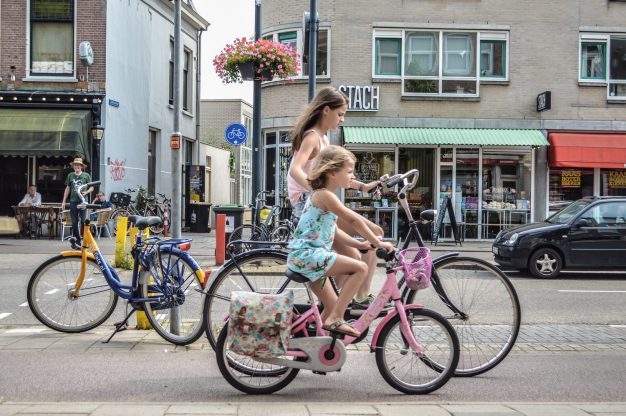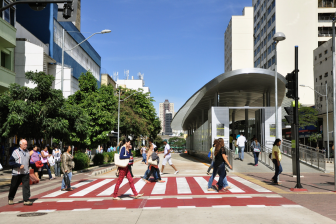
A (cycle) path to a safer global cycling infrastructure for children and young people
In the hustle and bustle of urban life, where traffic jams and pollution are commonplace, the humble bicycle stands out as a beacon of sustainable transportation.
For children and young people, cycling represents not just a means of getting from point A to point B, but a gateway to freedom, exploration, and independence. However, as cities grapple with the complexities of urban planning and transportation, a pressing question arises: Are cities worldwide truly cycle-friendly for children and young people?
While the answer may vary depending on location, the overarching sentiment among experts and advocates is one of cautious optimism tempered by significant challenges. Across continents, from bustling metropolises to quaint towns, the state of cycling infrastructure for young riders is a mixed bag of successes and shortcomings.
In cities like Amsterdam and Copenhagen, often hailed as cycling paradises, the landscape tells a different story. “In the Netherlands, cycling is a way of life,” says Janneke Slootjes, a cycling advocate based in Amsterdam. “Children learn to ride a bike before they can walk, and our infrastructure reflects that. Dedicated bike lanes, traffic signals for cyclists, and strict traffic laws prioritize their safety from a young age.”
‘It’s no wonder children feel safe riding their bikes here’
Dutch cities are rightly lauded for their commitment to prioritising the rights of cyclists – and other vulnerable road users like pedestrians of course – over those of motorists, and it’s this approach which is also a particular winner with expat families who have relocated to The Netherlands from countries which, both in terms of the law and the culture, have a very different attitude towards cyclists.
Paul Johnson and his family are from the UK, and moved to the city of Breda for Paul’s work in 2015. Paul is the proud owner of a bakfiets, the popular cargo or ‘box bike’ which has a large compartment in the front for carrying, well, anything and everything. In the case of Paul’s family, it’s their three young children.
“It took a long time to get used to the rules of the road, and that vehicles will almost always give you the right of way, because that’s just the way that things are,” says Paul. “There is none, or very little anyway, of the ‘horn honking’ impatience that you see in the UK and some other countries I’ve seen. It’s a way of life that we have embraced and where our children feel safe, and that’s particularly reassuring to us as parents as the children grow up and will be riding their own bikes.”
His sentiments are echoed by Lars Jensen, a resident of Copenhagen, Denmark. “Here, cycling is not just a mode of transportation; it’s a culture,” he explains. “Our city is designed with cyclists in mind, with wide bike lanes and separate paths for pedestrians. It’s no wonder that children feel safe and confident riding their bikes here.”
However, such cycling utopias are the exception rather than the norm. In many cities worldwide, the cycling experience for children and young people is fraught with challenges. “Navigating the streets of Mumbai on a bicycle is like playing a game of survival,” says Priya Sharma, a mother of two residing in this Indian ‘megacity’. “The lack of dedicated bike lanes, coupled with chaotic traffic conditions, makes it incredibly unsafe for my children to ride their bikes outside.”
Similar sentiments are echoed in cities across the globe, from New York City to São Paulo. “In New York, we’re making progress, but there’s still a long way to go,” says Mark Johnson, a cycling advocate based in Brooklyn. “Too often, children are forced to share the road with aggressive drivers, putting them at risk of accidents and injuries.”
The issue of safety looms large in the conversation surrounding cycling infrastructure for young riders. According to the World Health Organization (WHO), road traffic injuries are a leading cause of death among children and young people globally, with cyclists being particularly vulnerable.
“Ensuring the safety of young cyclists should be a top priority for policymakers,” emphasizes Dr. Maria Rodriguez, a public health expert specializing in injury prevention. “Investing in dedicated bike lanes, traffic calming measures, and educational programs can significantly reduce the risk of accidents and injuries.”
‘Signs of progress on the horizon’
However, addressing these challenges requires more than just infrastructure improvements; it necessitates a fundamental shift in urban planning priorities. “We need to rethink the way we design our cities,” says Thomas Müller, an urban planner based in Berlin, Germany. “Cycling should be integrated into every aspect of urban development, from transportation planning to land use policies.”
This sentiment is echoed by Jane Smith, a member of the City Council in Portland, Oregon. “Creating a cycle-friendly city isn’t just about building bike lanes; it’s about creating vibrant, livable communities where cycling is accessible to everyone,” she explains. “That means investing in affordable housing, public transportation, and green spaces that encourage active lifestyles.”
Despite the challenges, there are signs of progress on the horizon. In cities like Paris and Bogotá, ambitious cycling-friendly policies are gaining traction, with expanded bike lane networks and car-free zones becoming the new norm. “The COVID-19 pandemic has been a wake-up call for cities worldwide,” remarks Carlos Gomez, a transportation expert based in Bogotá. “As people seek alternatives to crowded public transportation, cycling has emerged as a safe, sustainable solution.”
Ultimately, creating cycle-friendly cities for children and young people requires a collaborative effort from policymakers, urban planners, community stakeholders, and residents alike. “We all have a role to play in shaping the future of our cities,” says Emma Brown, a youth activist and avid cyclist. “By working together, we can create cities where cycling isn’t just a mode of transportation; it’s a way of life for future generations.”




